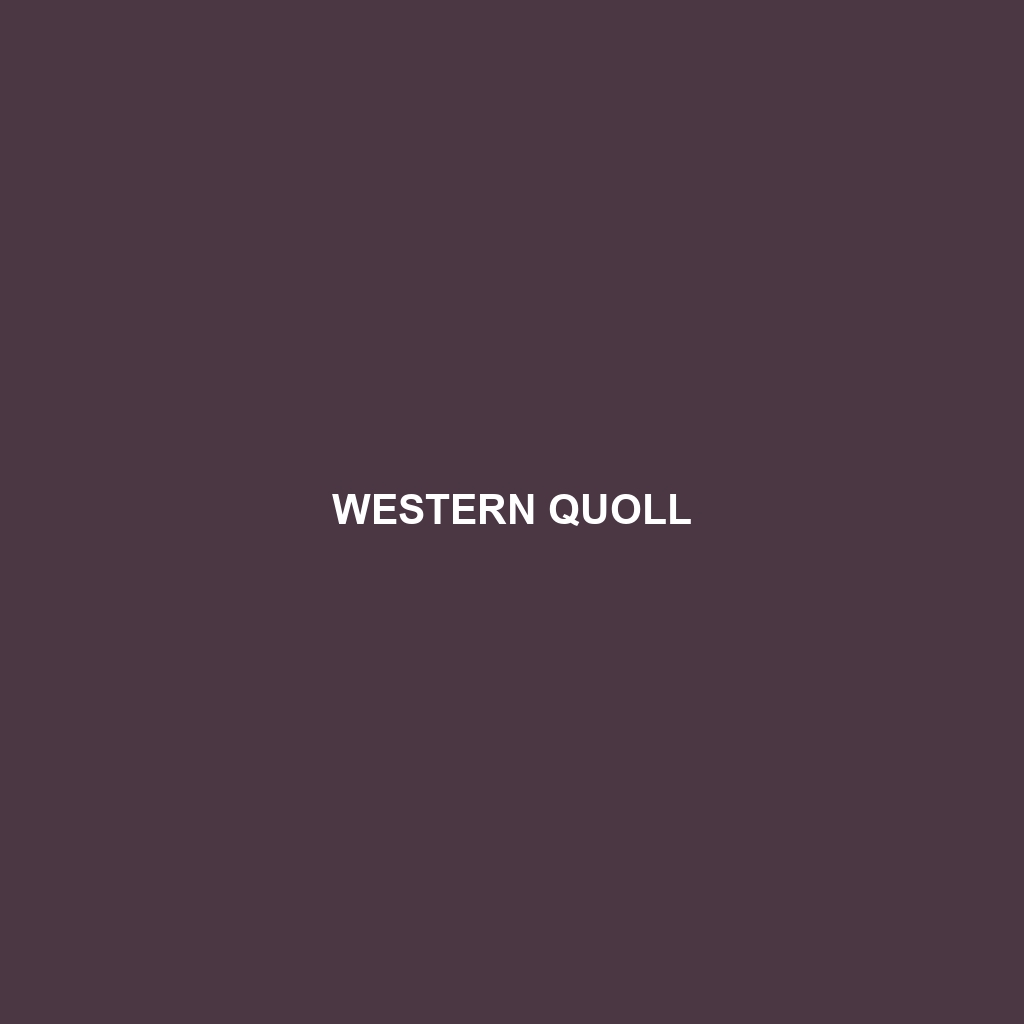Western Quoll (Dasyurus geoffroii) Detailed Description
The Western Quoll, also known as the Chuditch, is a remarkable marsupial native to Western Australia. Known for its distinctive spotted coat and agile hunting prowess, this nocturnal predator plays a vital role in the ecosystem. With a dwindling population due to habitat loss and predation by invasive species, the Western Quoll is now classified as a near-threatened species, making conservation efforts crucial for its survival.
Physical Characteristics
Size: The Western Quoll is a medium-sized marsupial, typically measuring between 30-40 cm in body length, with an additional tail length of about 25-35 cm. Males are generally larger than females, weighing between 1.3-2.0 kg, whereas females weigh between 0.9-1.2 kg.
Coloration: Their fur is typically a warm brown to reddish-brown, adorned with prominent white spots scattered across their body and tail. The underbelly is usually a creamy white color. The coat is dense and soft, providing insulation against the varying temperatures of their habitat.
Special Features: Western Quolls possess sharp claws and strong limbs, adapted for climbing and digging. Their large, sensitive ears and keen eyesight aid in nocturnal hunting, while their long, pointed snout houses sharp teeth ideal for a carnivorous diet.
Behaviors
Social Interactions: Western Quolls are solitary animals, primarily coming together only during the breeding season. They maintain and defend territories through scent markings and vocalizations.
Feeding Habits: As opportunistic carnivores, their diet includes insects, small mammals, birds, and reptiles. They are proficient hunters, utilizing their agility and acute senses to track and capture prey during the night.
Ecological Roles: Western Quolls are vital in controlling the populations of various small animals and insects, thus maintaining a balanced ecosystem. Their presence is indicative of a healthy environment.
Habitats and Adaptations
Habitats: Historically widespread across Australia, Western Quolls are now primarily found in the southwestern regions of Western Australia. They inhabit diverse landscapes, including forests, woodlands, and shrublands, often preferring areas with dense undergrowth and hollow logs for shelter.
Adaptations: Western Quolls have several adaptations for survival. Their nocturnal lifestyle helps them avoid daytime predators and extreme temperatures. Their sharp claws and muscular build facilitate climbing and burrowing, essential for hunting and creating shelters. The spotted coat provides camouflage in the dappled light of their forest habitats.
Conservation Status
The Western Quoll is currently classified as Near Threatened by the IUCN Red List. Significant threats to their population include habitat destruction due to agricultural expansion, predation by introduced species such as foxes and cats, and road accidents. Conservation efforts are focused on habitat protection, predator control programs, and breeding and reintroduction initiatives to bolster their numbers.
Fascinating Fun Facts
Western Quolls are one of the largest carnivorous marsupials in Australia, second only to the Tasmanian Devil.
They have a unique breeding cycle, with females giving birth to up to six young after a gestation period of just 17-18 days. The tiny, underdeveloped young then continue to grow in the mother’s pouch for several weeks.
Western Quolls have a lifespan of around 3-5 years in the wild, though they can live longer in captivity under ideal conditions.
Historical records suggest that Western Quolls once inhabited a vast range across the Australian continent, highlighting the dramatic impact of environmental changes and human activities on their distribution.
By understanding and appreciating the intricate details of the Western Quoll’s life, we can better advocate for their conservation and ensure that these fascinating creatures continue to thrive in their natural habitat.
